 |
 |
 |
 |
 |
 |
 |
 |
 |
 |
|
Research @ KICP
|
Particles from Space  Overview One of the founding missions of the Kavli Institute for Cosmological Physics is to explore the highest energy particles from space to study their origin, and their implications to fundamental particle interactions, quantum gravity and the structure of space-time itself. This research bridges the frontier between particle physics and astrophysics. Researchers at the KICP are using a variety of facilities to study Ultra-high energy cosmic rays and extremely energetic gamma-rays to gain insights into the highest energy processes at work in the universe and to indirectly study the nature of dark matter and its interactions. Several experiments are also being carried out which aim to directly observe dark matter particles in underground laboratories like the one 60 feet below the LASR building. These very energetic photons and cosmic rays as well as the direct detection of dark matter particles can probe particle physics phenomena that occur beyond the realm of the Standard Model of particle physics. Cosmic rays are not "rays" but highly energetic particles - protons and atomic nuclei and neutrinos- that are accelerated to very high energies by various possible astrophysical phenomena in the universe. For instance cosmic rays could be accelerated in the jets produced when matter falls onto supermassive black holes at the centers of galaxies. They could be produced in the supernova explosions that accompany the death of massive stars or in the still mysterious gamma-ray bursts, or by extremely magnetized neutron stars (magnetars). These processes can accelerate particles to vastly higher energies (up to 30 million times higher) than those attainable by earthbound accelerators. The Big Bang generated particle relics that we have yet to detect as dark matter - in other words the Universe itself acts as a giant 'cosmic accelerator' of particles, which may have been created in the earliest epoch of the Universe. Studying high-energy particles from space and extremely energetic gamma-rays will help scientists discern underlying connections between physical laws that governed the long-sought unification of forces. Efforts are also underway to try to directly detect the particles that are believed to constitute the 'dark matter' in the universe. KICP scientists are involved with four different experimental facilities to explore these connections: The Pierre Auger Ultra-High Energy Cosmic Ray Observatory The Pierre Auger Project is named after a French physicists who was the first to realize that when an ultra high energy cosmic ray (UHECR) particle enters the earth's atmosphere its enormous energy is transferred to air molecules resulting in a cascade of subatomic particles that can be detected by photo multiplier tubes on the ground as an "air-shower". The Pierre Auger project is a set of two giant air shower arrays. The first is currently under construction in the southern hemisphere (Argentina) and a second one is planned for North America. When the southern array is complete this facility will comprise 1600 water tanks (surface detectors) covering an area roughly the size of Rhode Island (3000 square-kilometers). Auger also uses optical air fluorescence telescopes to track the developments of "air showers" through the atmosphere. The combined ground array of fluorescence telescopes is the best tool to address the mystery of the origin of high energy cosmic rays. In addition, Auger will detect neutrinos through horizontal and upward going showers. Neutrino showers are among the best tools to study fundamental interactions at energies beyond what can be produced on Earth. Very Energetic Radiation Imaging Telescope Array System (VERITAS) 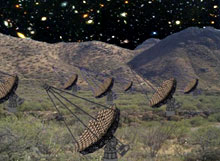 CERN's Axion Solar Telescope (CAST)  Low-background WIMP detectors and the Chicagoland Observatory for Underground Particle Physics (COUPP) 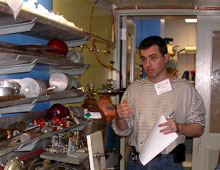 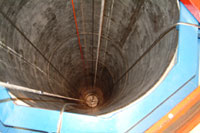
Core Projects
|


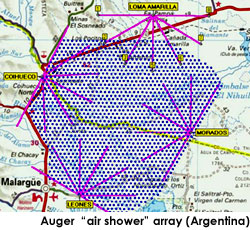
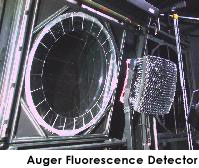



 Overview
Overview